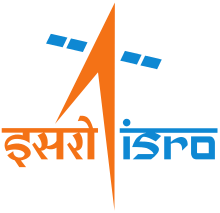Avatar (spacecraft)
| Function | Unmanned reusable spaceplane |
|---|---|
| Manufacturer | DRDO |
| Country of origin |
|
| Size | |
| Mass | 25 tons [1] |
| Stages | 1 |
| Capacity | |
| Payload to low Earth orbit | 1,000 kg (2,200 lb) |
| Launch history | |
| Status | A concept only |
| Total launches | 0 |
| First stage | |
| Engines | turbo-ramjet, scramjet and cryogenic |
| Fuel | LOX/LH2 |
Avatar (Sanskrit: अवतार) (from "Aerobic Vehicle for Transatmospheric Hypersonic Aerospace TrAnspoRtation") is a concept study for a unmanned single-stage reusable spaceplane capable of horizontal takeoff and landing, by India's Defence Research and Development Organisation. The mission concept is for low cost military and commercial satellite space launches.[2][1][3] No further studies or development have taken place since 2001.
This spaceplane concept is unrelated to India's RLV Technology Demonstration Programme (RLV-TD).[4]
Concept
In Sanskrit, the word avatar (अवतार avatāra) is derived from अव-तर ava-tara (lit. to move/cross below, i.e. descend) and literally means "that which descends". In Hinduism, an avatar refers to deliberate descent of a deity to Earth, or a descent of the Supreme Being.
The idea is to develop a spaceplane vehicle that can take off from conventional airfields. Its liquid air cycle engine would collect air in the atmosphere on the way up, liquefy it, separate oxygen and store it on board for subsequent flight beyond the atmosphere. The Avatar, a reusable launch vehicle, was first announced in May 1998 at the Aero India 98 exhibition held at Bangalore.[5]
Avatar is projected to weigh 25 tons, of which 60% of that mass would be liquid hydrogen fuel.[1] The oxygen required by the vehicle for combustion in outer space would be collected from the atmosphere during takeoff, thus reducing the need to carry oxygen during launch.[1] The notional specification is for a payload weighing up to 1,000 kg (2,200 lb) to low Earth orbit and to withstand up to 100 launches and reentries.[2][1]
If built, Avatar would take off horizontally like a conventional airplane from a conventional airstrip using turbo-ramjet engines that burn hydrogen and atmospheric oxygen.[1] During this cruising phase, an on-board system would collect air from the atmosphere, from which liquid oxygen would be separated and stored and used to burn the stored hydrogen in the final flight phase to attain orbit. The vehicle would be designed to permit at least one hundred launches and atmospheric reentries.[1]
Feasibility study
The Avatar concept study was commissioned by India's Defence Research and Development Organisation in 2001.[2] India's Space Agency ISRO has no connection with the project.[4] Air Commodore Raghavan Gopalaswami, who headed the study, made a presentation on the spaceplane at the global conference on propulsion at Salt Lake City, USA on July 10, 2001.[2][1] Gopalaswami said the idea for Avatar originated from the work published by the RAND Corporation of the United States in 1987.[1]
No further studies or development have taken place since 2001.[6]
See also
Spaceplanes of comparable role, configuration and era
References
- 1 2 3 4 5 6 7 8 9 "India Eyes New Spaceplane Concept". Space Daily. New Delhi. August 8, 2001. Retrieved 2014-10-22.
- 1 2 3 4 "Indian Scientists unveils space plane Avatar in US". Gujarat Science City. 10 July 2001. Retrieved 2014-10-22.
- ↑ "AVATAR- Hyper Plane to be built by INDIA". India's Military and Civilian Technological Advancements. December 19, 2011.
- 1 2 "Government of India Department of Space" (PDF). March 14, 2012. Retrieved 2016-04-27.
Feasibility study of project "AVATAR)" has been done by a group of scientists in DRDO. ISRO has no connection with the project.
- ↑ "AVATAR- Hyper Plane to be built by INDIA". Abin Puthiyath. Indian Defence Research. Retrieved 19 December 2011.
- ↑ "Report of the Horizontal Launch Study" (PDF). DARPA. NASA. June 2011. Retrieved 2016-04-27.
Last year of effort: 2001
